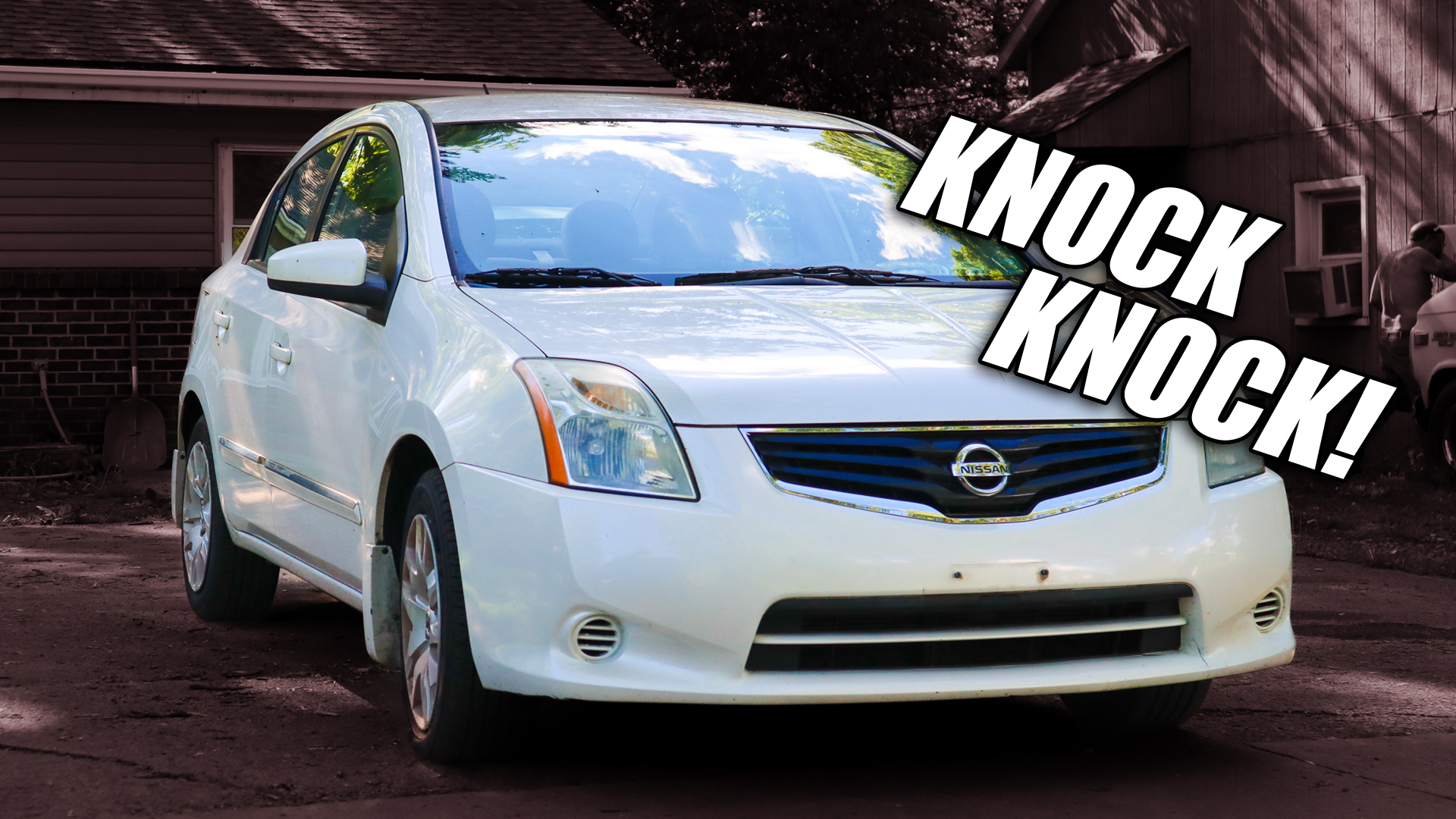

We may earn revenue from the products available on this page and participate in affiliate programs. Learn more ›
Of the 40-odd cars I’ve bought and sold, I’ve had one rule—never buy a Nissan. There’s been an exception, my second flip ever was a 1998 Altima, but I tend to not make a habit of buying them. In my experience, the profit margins just aren’t there for Nissans, mostly because of the failure rate and replacement costs of the problematic JATCO CVTs found in most automatic Nissans since 2006. Yet, when I saw a newer Nissan Sentra with a bad engine instead of the typically broken transmission, I was intrigued.
Many will rant on the dynamic and drivability concerns of most modern Nissan products, and I don’t disagree. But when you’re buying something broken to fix and resell, Remember when it’s a flip, driving dynamics are pretty irrelevant, it’s all a cost-and-profit analysis.
It’s kind of a fact now that good deals are hard to find. Recently, my fellow car-flipping friend Cory and I were scouring Facebook Marketplace and Craigslist for potential flips. We were both itching for some new wheels and struggling to find anything worth our time. Cory had just done well on a base model Lancer a few weeks prior, but I hadn’t had anything since my Mazda 3. Technically, my Honda CR-Z is still a flip, but that this point it’s clear that the car won’t be back on the road any time soon.
Cory and I have differing opinions on how to find flippable vehicles. He swears by public auctions, I can’t stand them. I don’t like competition and high-stakes pressure to buy a vehicle that I can’t really vet all that well. But Cory has historically made out pretty well, so with some money in our pockets, we woke up early on a mid-May Saturday morning to see if we could find some deals.
There were no deals. Cory and I watched in horror, as folks in search of basic cheap transportation were pitted against scummy buy-here-pay-here lot owners. Unfortunately, the buy-here-pay-here lot owners were winning. They bid up anything that moved under its own power, sometimes past its good condition retail price. They don’t care, those cars will be sold for a per-week payment, at sky-high rates. Both of us left the auction that day demoralized, and without a spare car.
Still, I didn’t give up. My dreadful experience only further reinforced why I stay away from auctions. I went back to my old technique: stalking the online classifieds until I find a deal.

Coincidentally, I stumbled on a 2011 Nissan Sentra, only moments after commiserating with Cory over a couple who grossly overpaid for a 2015 Nissan Sentra. The listing was only a few minutes old and the price was a little high, but the seller was coincidentally a mere 10 minutes from my house. I had been scammed earlier that week and lost $150, so my guard was up, but this time the owner wanted to meet in person, as soon as possible. He didn’t ask for any money to hold the car, either. It was a good sign.
Listed was a 2011 Nissan Sentra that had done 123,000 miles, fairly low for its year. The vehicle was owned by an avowed mechanic’s daughter, who paid for brand new tires a mere month before the engine started knocking. Sadly, I was told that the family mechanical patriarch had a stroke and is no longer able to work on cars. Now, he’s selling off his spare projects to make ends meet.

Sad story aside, the cost and return-on-interest seemed to really challenge my “no Nissans” rule. From what I could tell, this Sentra was in good physical shape, unlike my last couple of flips. The body was generally blemish-free, aside from some mossy paint from sitting under a tree for the past six months, and a suspiciously rusty gas door. I knew that Nissan MR family engines are generally trouble-free units, meaning a replacement would be cheap. So long as the transmission was okay, the math looked like it was mathin’.


Still, I wasn’t 100% sold, and maybe I’ve been jumping into my last few flips feet first, so I vetted the Sentra a little more. The car knocked severely at idle, and revving even to 2,000 RPM produced a knock so fierce you’d probably think you were ten feet away from someone building the walls of a house. Clearly, the motor was shot, but what was the state of the transmission? My scanner revealed no transmission trouble codes. The car could move forward and backward under its own power, even with a knocking motor.
And well, that was good enough for me. Within a day, the car was towed away to the mechanic, ready for its new MR20DE heart.
Here’s a price estimate from what I could see:
- Purchase Price: $1,600
- Tax, title, registration: ~$120
- Tow: $110
- Engine: $700
- Labor, fluids (engine oil, coolant, CVT fluid) : $750
- Gas door: $50
- Total Invested: $3,330.
According to Kelley Blue Book, this Sentra is worth around $4785 to $5950, for a 2011 Sentra with 123,000 miles, in “very good” condition. Given how inflated the market is, and Sentra’s generally good physical shape, I think somewhere in the $5,000 range is very much achievable. In short, I’m looking at a potential profit from $1,455 to $2,620.

A Nissan technician friend explained to me that these Sentras generally have good CVTs, compared to other Nissan vehicles, at least anecdotally. Hopefully, he’s right, and my gamble with a tricky transmission will pay off.